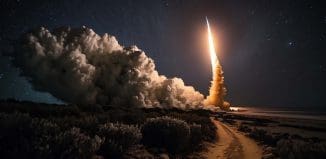NASA’s Global Hawk UAV Flew 21-Hour Mission Over the Arctic
This post is also available in:  עברית (Hebrew)
עברית (Hebrew)
 Northrop Grumman Corporation, the NASA Dryden Flight Research Center and a team of international science organizations successfully flew a Northrop Grumman-produced NASA Global Hawk unmanned aircraft system through Canadian airspace as part of a mission to collect environmental data in the Canadian Arctic.
Northrop Grumman Corporation, the NASA Dryden Flight Research Center and a team of international science organizations successfully flew a Northrop Grumman-produced NASA Global Hawk unmanned aircraft system through Canadian airspace as part of a mission to collect environmental data in the Canadian Arctic.
According to the report in Unmanned Systems Technology the Global Hawk was equipped with an Uninhabited Aerial Vehicle Synthetic Aperture Radar (UAVSAR) as well as a high resolution camera to conduct ground mapping and visual observation of Arctic ice caps during the approximately 21-hour flight. Information collected during this flight will be used by American and Canadian scientists to study changes in topography and Arctic ice caps.
This flight marks the first time the NASA Global Hawk has flown through Canadian civil airspace. Global Hawk’s high-altitude, long-endurance capabilities enabled the aircraft to depart from NASA Dryden, based at Edwards Air Force Base, Calif., and fly over several predetermined key areas in the Arctic before returning to NASA Dryden.
IHLS – Israel Homeland Security
NASA Global Hawks have already been used for a wide range of environmental missions, including collecting atmospheric data in support of the Airborne Tropical TRopopause EXperiment and deployment over the Atlantic Ocean to study hurricane formation and intensity change during the Hurricane and Severe Storm Sentinel missions.
The flight over the Canadian Arctic comes after the recent five-year renewal of the Space Act Agreement, a partnership between Northrop Grumman and NASA that allows sharing of NASA Global Hawks for science missions and flight demonstrations. The initial Space Act Agreement, signed in 2008, returned two preproduction Global Hawk aircraft to flight status. A permanent Global Hawk ground control station was built at NASA Dryden.





























